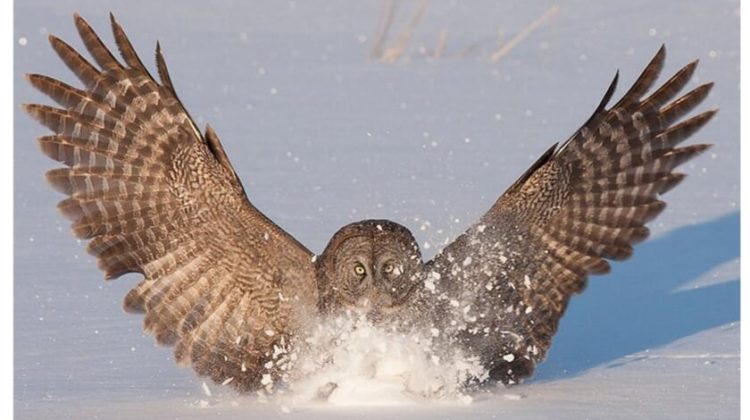
Researchers from Xi’an Jiaotong University in Shaanxi, China, have used the characteristics of owl wings to inform the design of airfoils, in the process significantly reducing what’s known the trailing-edge noise.
‘Nocturnal owls produce about 18 decibels less noise than other birds at similar flight speeds due to their unique wing configuration,’ said Xiaomin Liu, from the university’s Department of Engineering Mechanics. ‘Moreover, when the owl catches prey, the shape of the wings is also constantly changing, so the study of the wing edge configuration during owl flight is of great significance.’
As air passes along the back of an airfoil, the flow forms a turbulent layer along the airfoil’s upper and lower surfaces. When that layer of air flows back through the trailing edge, it scatters and creates noise. This so-called trailing-edge noise is the dominant source of sound produced by aeronautical and turbine engines, such as those in airplanes, drones and wind turbines. Suppressing the sound is a major environmental goal in many urban areas.
Previous studies have explored found that making an airfoil’s trailing edge serrated effectively reduces the noise of rotating machinery; however, the noise reduction isn’t universal, depending heavily on the final application.
‘At present, the blade design of rotating turbomachinery has gradually matured, but the noise-reduction technology is still at a bottleneck,’ said Liu. ‘The noise-reduction capabilities of conventional sawtooth structures are limited, and some new non-smooth trailing-edge structures need to be proposed and developed to further tap the potential of bionic noise reduction.’
The team used noise calculation and analysis software to conduct a series of detailed theoretical studies of simplified airfoils that had characteristics reminiscent of those seen in owl wings. They then applied their findings to the design of airfoils in rotating machinery and measured the level of noise suppression.
They found that asymmetric serrations reduced noise more than their symmetric counterparts. The magnitude of the noise reduction varied depending on the operating conditions, so the scientists point out that new airfoil designs would need to be further evaluated based on the specific application. For example, wind turbines have complex incoming airflow environments and thus would require a relatively general noise-reduction technology.
The research has been published in Physics of Fluids.



